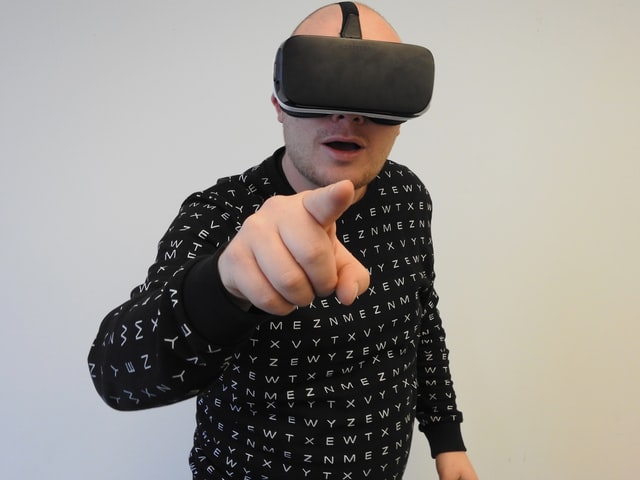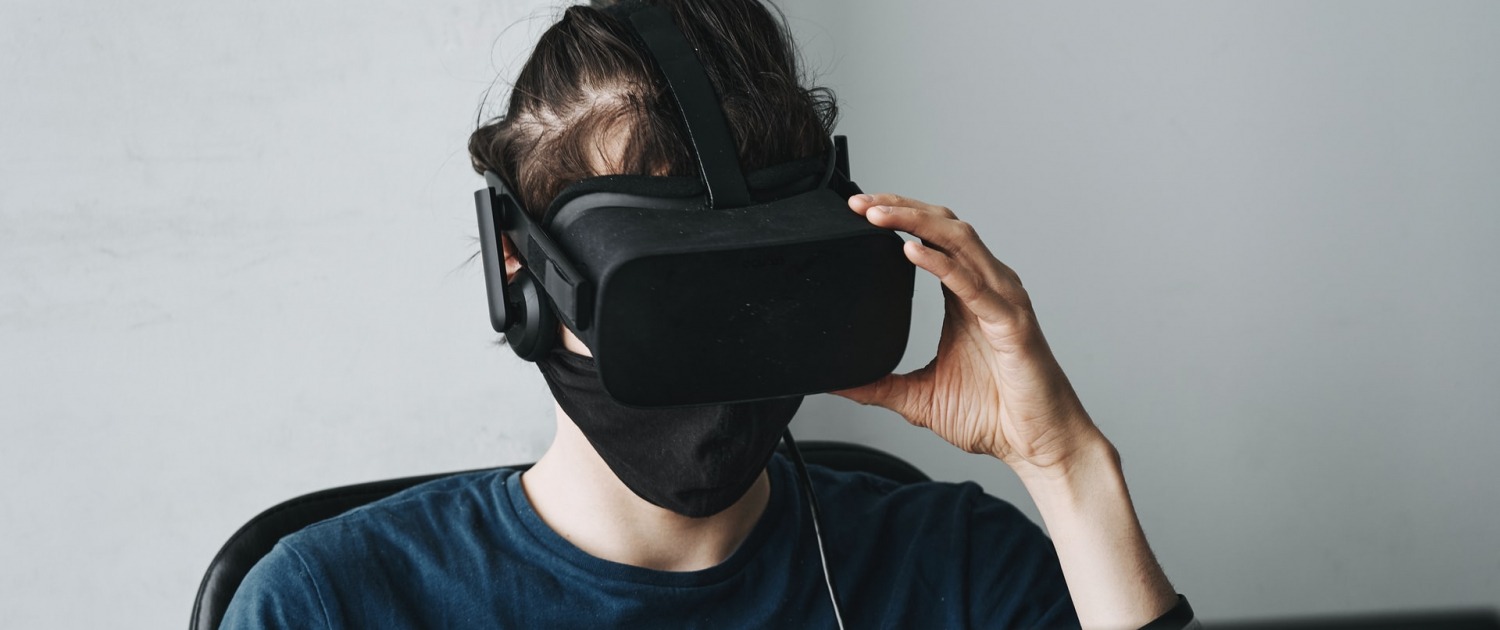Virtual reality has the potential to solve some of the world’s biggest problems. From social isolation to mental health issues, VR can help people in a variety of ways. Let’s take a look at five of the biggest problems that virtual reality can solve.
Social Isolation
Social isolation is a state of isolation from other people. It can be caused by a number of factors, including physical isolation, psychological isolation, and social isolation. Physical isolation is a state of isolation in which one is physically separated from others. Psychological isolation is a state of isolation in which one is psychologically separated from others. Social isolation is a state of isolation in which one is socially isolated from others. Social isolation can have negative consequences on mental and physical health.
Social isolation can have negative effects on mental and physical health. Social isolation has been linked to depression, anxiety, loneliness, and poor physical health. Depression is a mental disorder that is characterized by low mood, loss of interest in activities, and fatigue. Anxiety is a mental disorder that is characterized by feelings of anxiety, worry, and fear. Loneliness is a feeling of isolation and disconnectedness from others. Poor physical health is a state of poor physical well-being. Social isolation can also lead to social anxiety, which is a fear of social situations.
Virtual reality has been shown to be effective in treating various forms of social isolation. One study found that VR can help people with autism spectrum disorder (ASD) improve their social skills. The study found that VR can help ASD patients become more engaged in social interactions and reduce their anxiety levels. Another study found that VR can help people with social anxiety disorder (SAD) overcome their fear of public speaking. The study found that VR can help SAD patients feel more comfortable in social situations and improve their communication skills. Finally, a recent study found that VR can help people who are socially isolated due to chronic illness or disability. The study found that VR can help these individuals reduce their feelings of isolation and improve their quality of life.
Physical Limitations
Virtual reality can be a great tool for people with physical limitations. It can help them to experience things that they otherwise wouldn’t be able to and to feel more independent. VR can also help with rehabilitation and therapy. There are many different ways that VR can be used to help people with physical limitations, and it is an exciting area of development.
One way that virtual reality can help people with physical limitations is by providing them with experiences that they would otherwise miss out on. For example, if someone is unable to travel due to their condition, they can use VR to visit different places and explore new environments. This can help them to feel more connected to the world and less isolated.
Another way that VR can help people with physical limitations is by providing a way for them to exercise and stay active. Some VR games and applications can be used as a form of physical therapy. This can help people to maintain their mobility and strength, and it can also be a fun and engaging way to stay active.
VR can also be used to create customized environments for people with physical limitations. For example, if someone is afraid of heights, they can use VR to gradually confront their fear in a safe and controlled environment. This can help them to overcome their fear and to feel more confident in everyday situations.
The potential applications of virtual reality are vast, and it is an exciting area of development. It has the potential to significantly improve the lives of people with physical limitations and help them to lead more independent and fulfilling lives.
Mental Health Issues
Virtual reality (VR) technology is increasingly being used as a tool to help people with mental health issues. VR allows people to confront their fears and anxiety in a controlled environment and can be an effective treatment for conditions such as post-traumatic stress disorder (PTSD), phobias, and anxiety disorders.
VR therapy is usually delivered in the form of exposure therapy, where patients are exposed to the thing they’re afraid of in a safe and controlled environment. This can help them to overcome their fear and learn to cope with anxiety-provoking situations.
How VR Exposure Therapy Works
VR exposure therapy is typically delivered in the form of a computer-generated simulation, where patients are exposed to the thing they’re afraid of in a safe and controlled environment. For example, people with a fear of heights may be exposed to a virtual reality simulation of being atop a tall building. The therapist can then gradually increase the level of difficulty to help the patient overcome their fear.
If you’re interested in trying VR exposure therapy, there are a few things you should know. First, it’s important to find a qualified therapist who is experienced in delivering VR therapy. Second, VR therapy is usually delivered in sessions, with each session lasting 30-60 minutes. And finally, VR therapy is not currently covered by insurance, so you may have to pay out of pocket for treatment.
The Evidence for VR Therapy
There is growing evidence that VR therapy can be an effective treatment for mental health issues. A study published in the journal Psychiatry Research found that VR exposure therapy was effective in reducing PTSD symptoms in military veterans. And a study published in the journal Cyberpsychology, Behavior, and Social Networking found that VR exposure therapy reduced fear of heights in people with acrophobia.
Limited Resources
Virtual reality (VR) technology can provide people with limited resources with opportunities to explore, learn and experience things that they would not otherwise have access to. VR can be used for educational purposes, to help people with disabilities or limited mobility, and to provide therapeutic experiences. Additionally, VR can be used as a tool for research and data collection.
Improving Access to Education and Training Opportunities
One of the potential benefits of VR technology is that it can improve access to education and training opportunities. For example, people living in remote or rural areas may not have the same access to educational resources as those living in urban areas. VR can provide people with limited resources with opportunities to explore, learn and experience things that they would not otherwise have access to. Additionally, VR can be used as a tool for research and data collection. Some of the potential benefits of VR technology include:
Enhancing Accessibility For People With Disabilities
Another potential benefit of VR technology is that it can enhance accessibility for people with disabilities. For example, people with limited mobility may not be able to access certain places or experience certain things. VR can provide people with disabilities with opportunities to explore, learn and experience things that they would not otherwise have access to. Additionally, VR can be used as a tool for research and data collection. Some of the potential benefits of VR technology include:
Allowing People to Experience Things That They Would Not Otherwise Be Able to
Another potential benefit of VR technology is that it can allow people to experience things that they would not otherwise be able to. For example, people who are unable to travel may not be able to see certain places or experience certain things. VR can provide people with limited resources with opportunities to explore, learn and experience things that they would not otherwise have access to. Additionally, VR can be used as a tool for research and data collection. Some of the potential benefits of VR technology include:
Enabling Research and Data Collection in a Controlled Environment
Another potential benefit of VR technology is that it can enable research and data collection in a controlled environment. For example, scientists may use VR to study human behavior or to conduct experiments. Additionally, VR can be used as a tool for research and data collection.
Geographical Boundaries

Virtual reality (VR) technology has the potential to help people who have geographical boundaries in a number of ways. For example, VR can be used for educational purposes, such as providing students with opportunities to learn about different cultures and environments. Additionally, VR can be used for entertainment and gaming purposes, helping to break down barriers between people from different parts of the world. Finally, VR can also be used for business purposes, such as providing employees with virtual training and development opportunities. In short, VR has the potential to help people who have geographical boundaries in a number of ways, making it a technology worth exploring further.
Education
One way that VR can help people who have geographical boundaries is by providing educational opportunities. For example, students can use VR to learn about different cultures and environments. This can be done by visiting virtual museums or taking virtual field trips. Additionally, VR can be used to create simulations of historical events. This can help students to understand what happened during these events and how they affected the world today. By providing educational opportunities, VR can help to break down barriers between people from different parts of the world.
Entertainment and Gaming
Another way that VR can help people who have geographical boundaries is by providing entertainment and gaming opportunities. For example, there are a number of multiplayer games available that allow players from all over the world to compete against each other. Additionally, VR can be used to watch movies and TV shows from different countries. This can help to break down barriers between people from different cultures. By providing entertainment and gaming opportunities, VR can help to break down barriers between people from different parts of the world.
Business
Finally, VR can also help people who have geographical boundaries by providing business opportunities. For example, employees can use VR to receive virtual training and development opportunities. Additionally, businesses can use VR to hold virtual meetings and conferences. This can help to break down barriers between employees from different parts of the world. By providing business opportunities, VR can help to break down barriers between people from different parts of the world.
Conclusion
In conclusion, VR has the potential to help people who have social isolation, physical limitations, mental health issues, limited resources, and geographical boundaries in a number of ways. For example, VR can provide people with opportunities to explore, learn, and experience things that they would not otherwise have access to. Additionally, VR can be used as a tool for research and data collection. By providing these opportunities, VR has the potential to help people who have social isolation, physical limitations, mental health issues, limited resources, and geographical boundaries in a number of ways.

